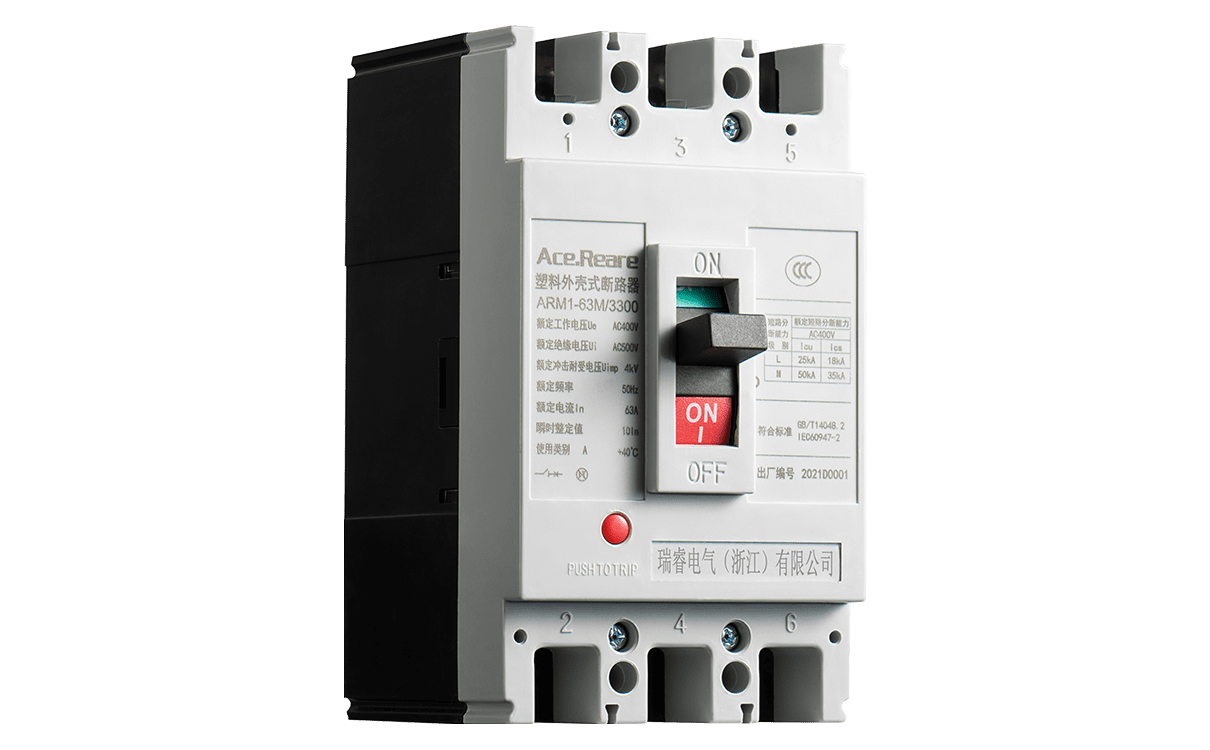
Date | 2022-09-20 13:43:45
Widely used in civil construction, defence, mining, industry and agriculture, transport and other fields, moulded case circuit breakers play a huge role in the distribution and transmission of electricity, circuit protection and control, and it is a product with a large volume and wide range of use.
As users do not have a deep or comprehensive understanding of the technical and characteristic requirements of plastic-case circuit breakers, certain concepts are particularly susceptible to confusion with each other and therefore misunderstandings and deviations often occur in practical applications. This article describes the problems that tend to arise when users use and select plastic-case circuit breakers. This enables users to make a reasonable choice of moulded case circuit breakers.
The case level current rating of a moulded case circuit breaker is the rated current of the largest tripper that can be mounted in a frame and plastic box of the same basic dimensions.
The moulded case circuit breaker current rating is the current through which the tripping of the circuit breaker can pass for a long period of time (also known as the tripping rating of the circuit breaker).

The same series of molded case circuit breakers have a variety of case level rated currents, and the same case level rated currents have a variety of rated currents. For example, the DZ20 series has 100, 225, 400, 630, 800, 1250, etc. pannier level rated current, 100 pannier level rated current of 16A, 20A, 25A, 32A, 40A, 50A, 63A, etc. 225A pannier level DZ20-100 and DZ20-225 two shell level have 100A rated current, but due to the circuit breaker Volume and cut-off capacity is different, in the selection must fill the entire shell level rated current within the rated current of the circuit breaker. The current rating classes are selected according to a (1.25) priority factor. On the one hand it is necessary to meet and satisfy the maximum circuit and electrical component current ratings. On the other hand, it is for standardisation to allow maximum use of diagram lines and processing. Therefore, 3(6), 8, 10, 12.5, 16, 20, 25, 32, 40, 50, 63, 80, 100, 125 and 160 are specified at the following levels
The integer value of the tripping current is the value of the tripping being adjusted to the movement current. A multiple of the rated current, In, is the value of the operating current. For example, the overcurrent is adjusted to 1.2, 1.3, 5, 10 times the current and recorded as IR = 1.2 in, 1.3 In, 5 In, 10 In, etc. Some electronic tripping is now available, which has an overload long time delay rated current that is adjustable, but the regulated current is still rated and is the maximum current that can be passed in the long term.
The rated operating current is the actual operating current of the contacts when the circuit breaker is fitted with auxiliary contacts (accessories) working at a specific operating voltage, with a current of 3A or 6A for circuit control and protection.
The rated insulation voltage is the voltage value to which the electrical clearance and leakage distance must refer for the design of the circuit breaker. Some circuit breakers do not specify a rated insulation voltage, so the maximum value of the rated operating voltage should be considered as the rated insulation voltage. In no case should the maximum rated operating voltage exceed the rated insulation voltage. The rated insulation voltage and the frequency test voltage of the circuit breaker are shown in Table 1.
The rated operating voltage is the cut-off capacity and category-related voltage value. The rated working voltage of the moulded case circuit breaker is 50Hz, 380V, but there are also moulded case circuit breakers with 50Hz, 600V and rated working voltage of 380V, 50Hz. Absolutely no supply voltages of 660V or 1140V are allowed.
The rated limit short-circuit interception capacity is the division capacity under the specified conditions. After doing the action in accordance with the prescribed experimental procedures, the circuit breaker is not considered and the rated current continues to be delivered.
The rated operating short-circuit interception capacity is the division capacity under the specified conditions. In accordance with the prescribed test procedure, the circuit breaker shall be considered to continue to deliver its rated current.
The rated control supply voltage is the voltage at which the separation and electrical mechanism accessories are installed on the moulded case circuit breaker. Both AC and DC voltages are available and the selection must show either AC or DC.
At the same time, in order to meet the needs of different users, many domestic circuit breaker manufacturers, for the same case class rated current short-circuit cut-off capacity can be divided into different levels.
The rated working short-circuit cut-off capacity value can be 25%, 50%, 75%, 100% of the rated limit short-circuit cut-off capacity, most circuit breakers can be 50% ~ 75%, very special 100% (ics = ICU) (e.g. Mellan by Schneider, France)